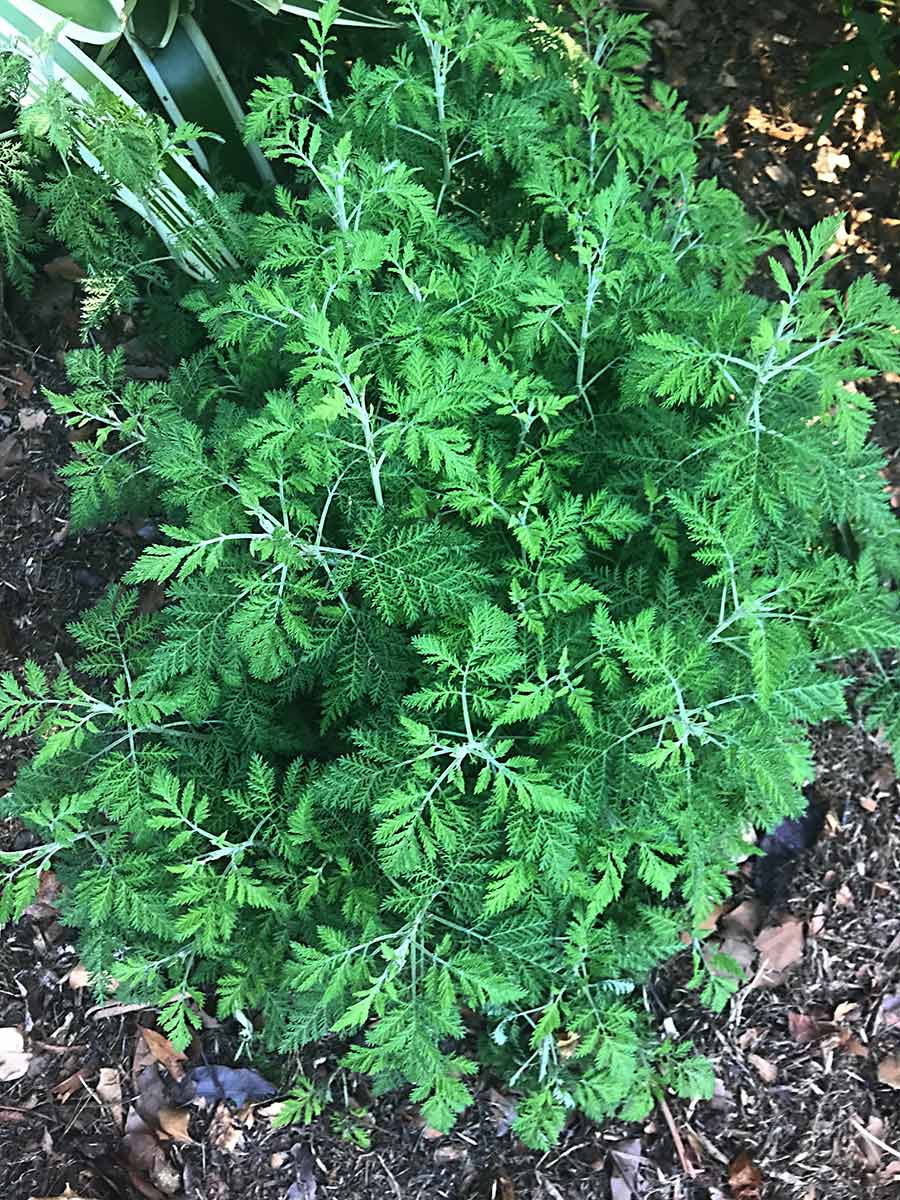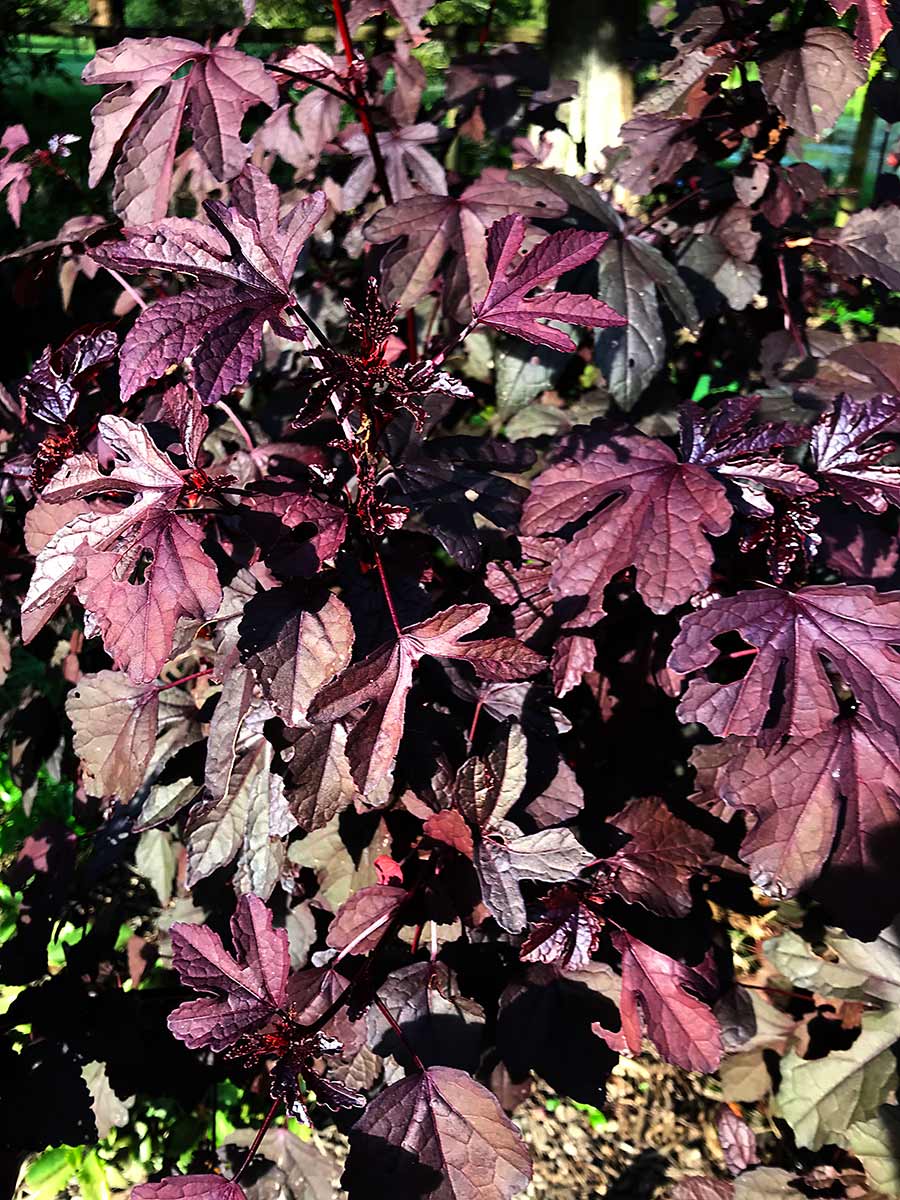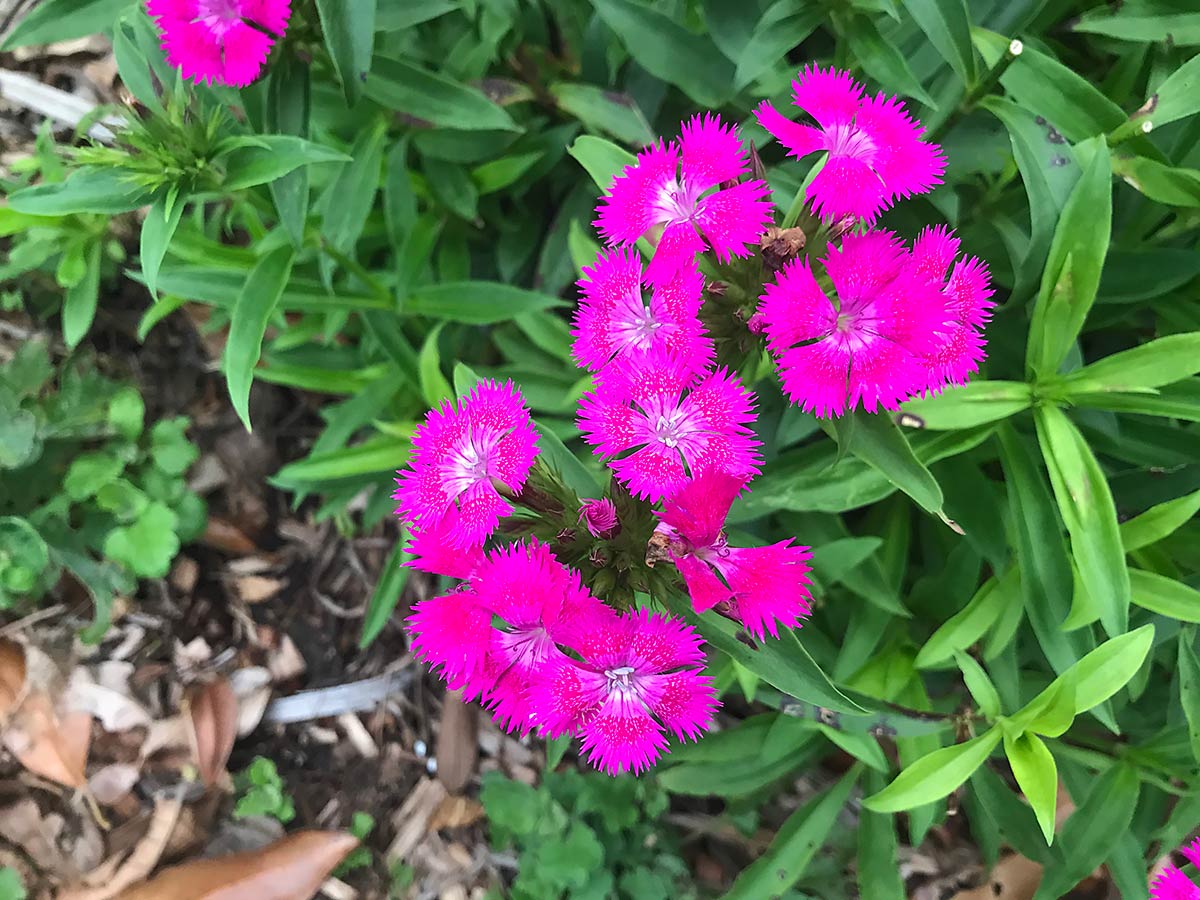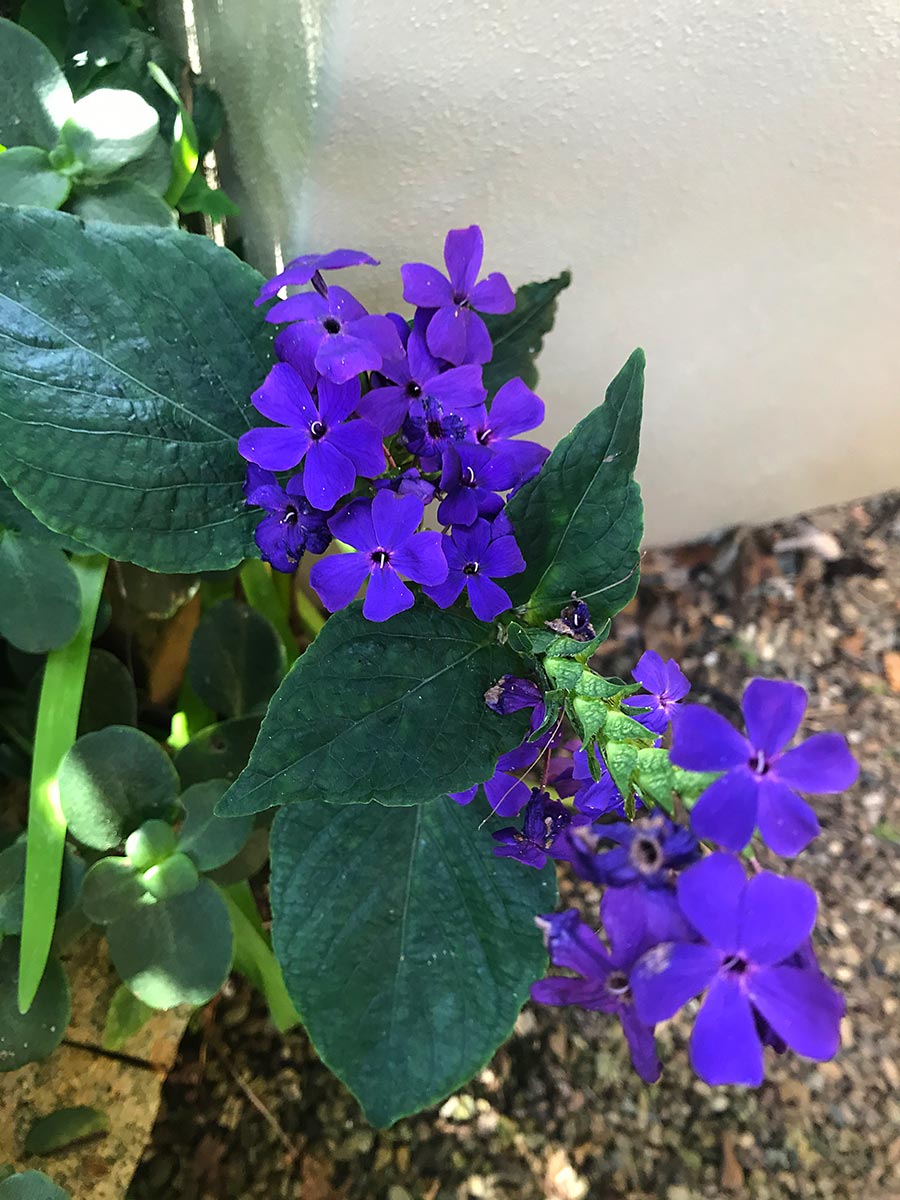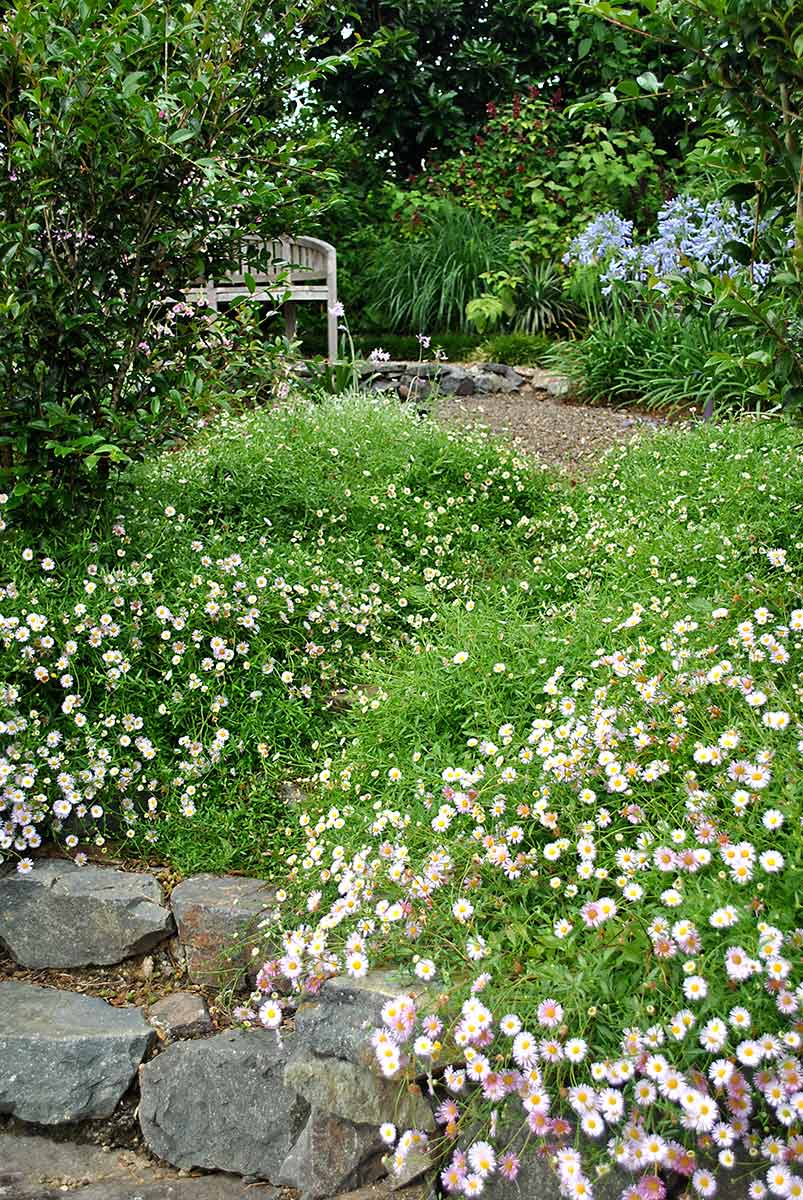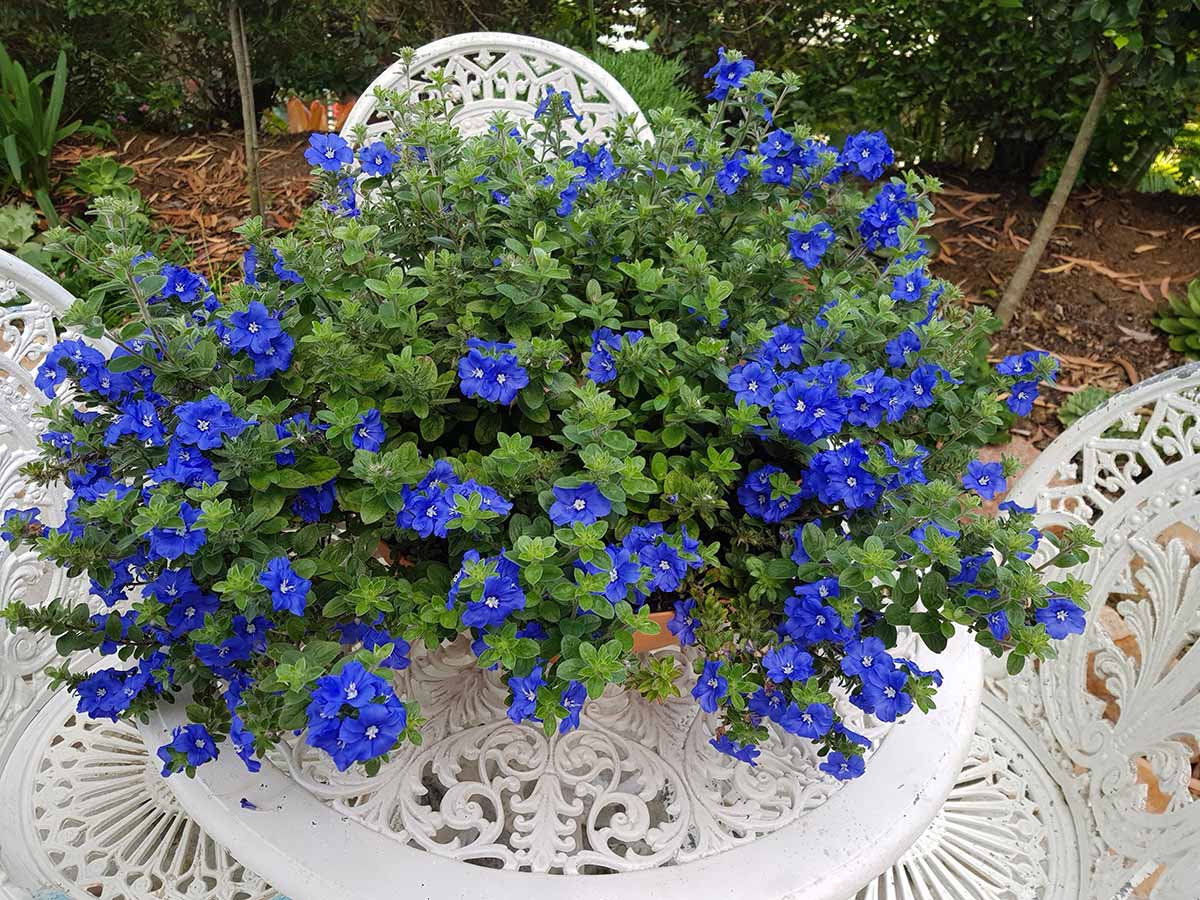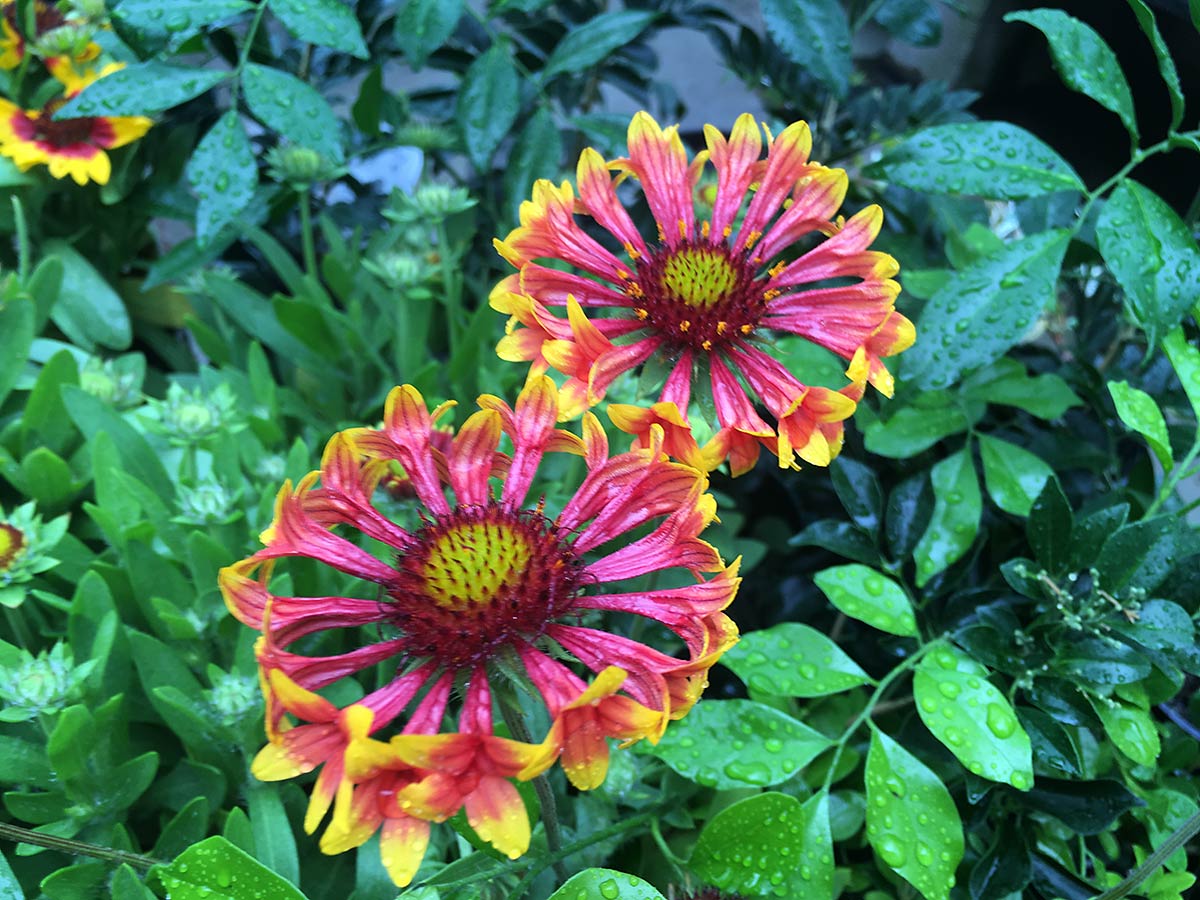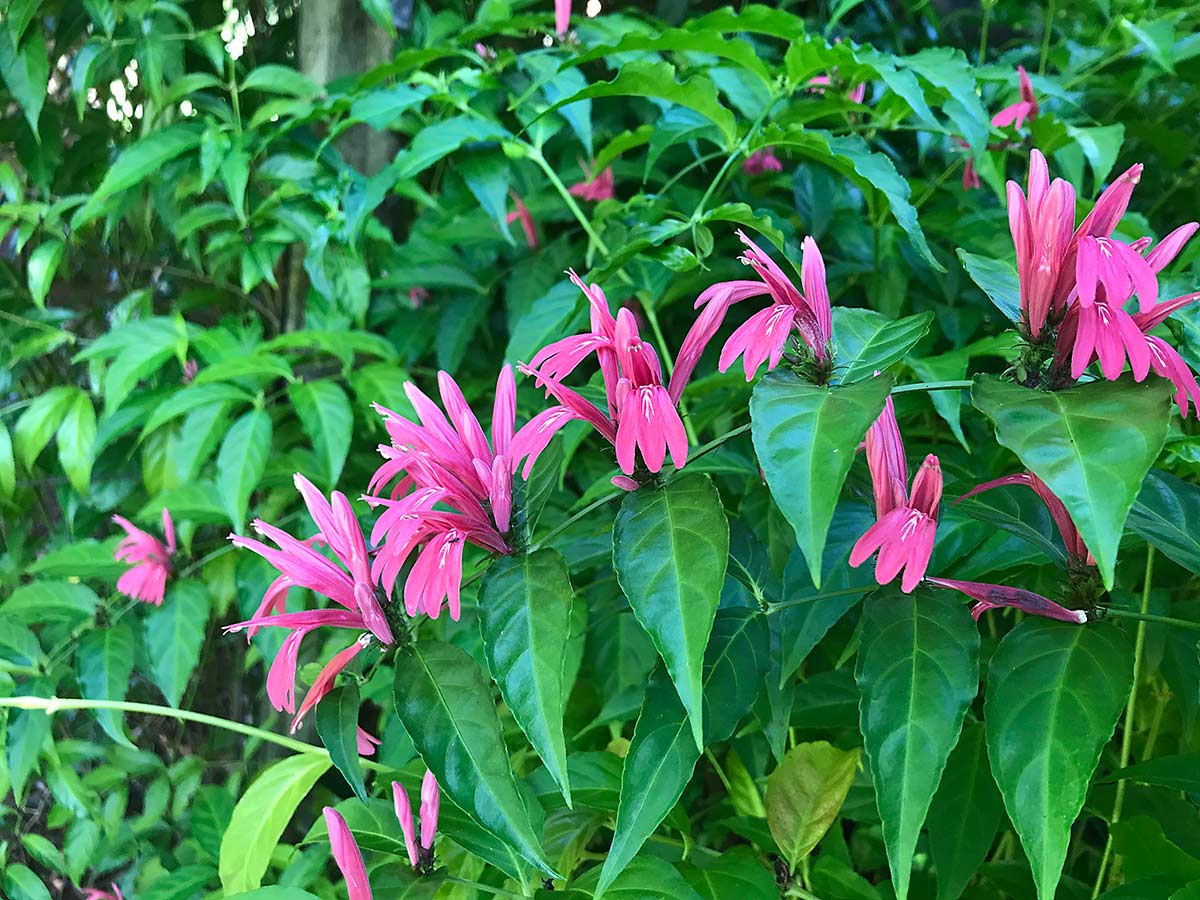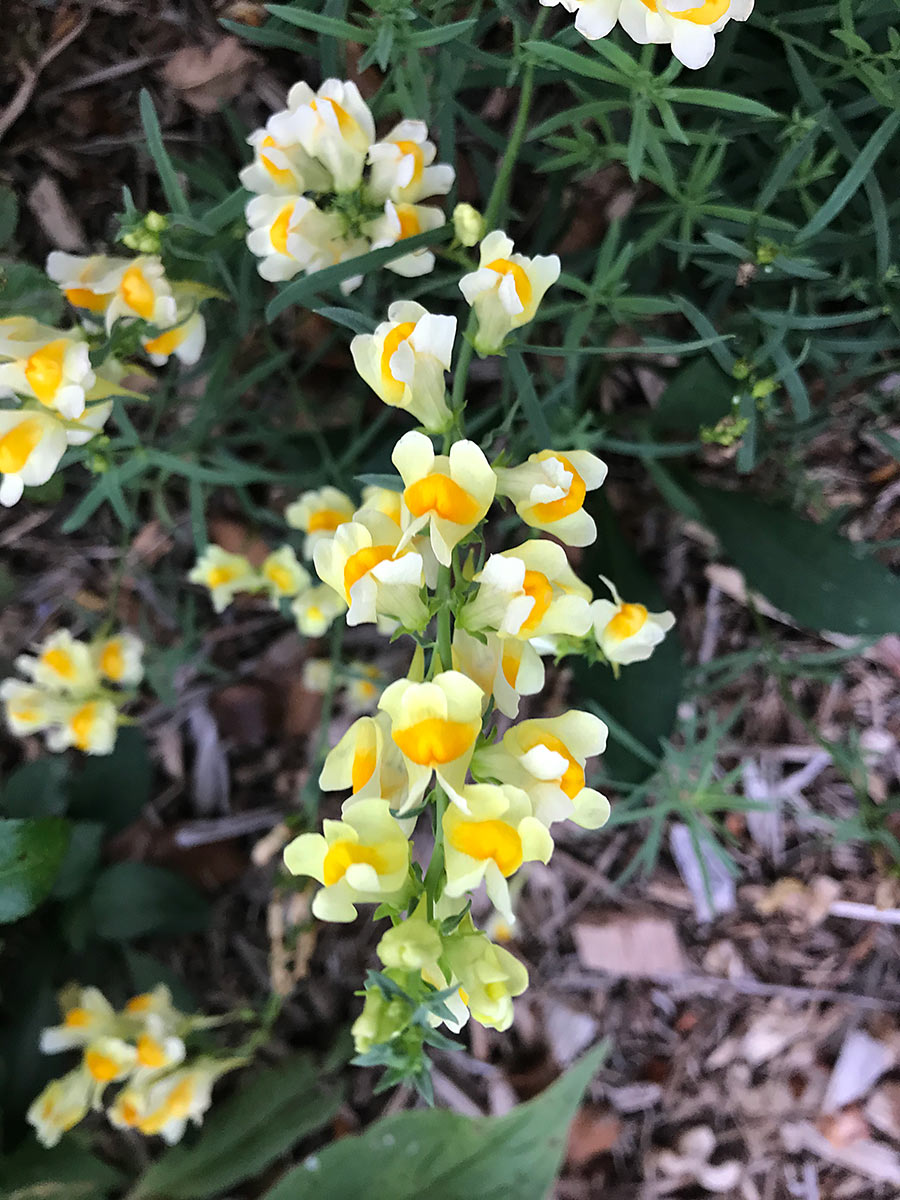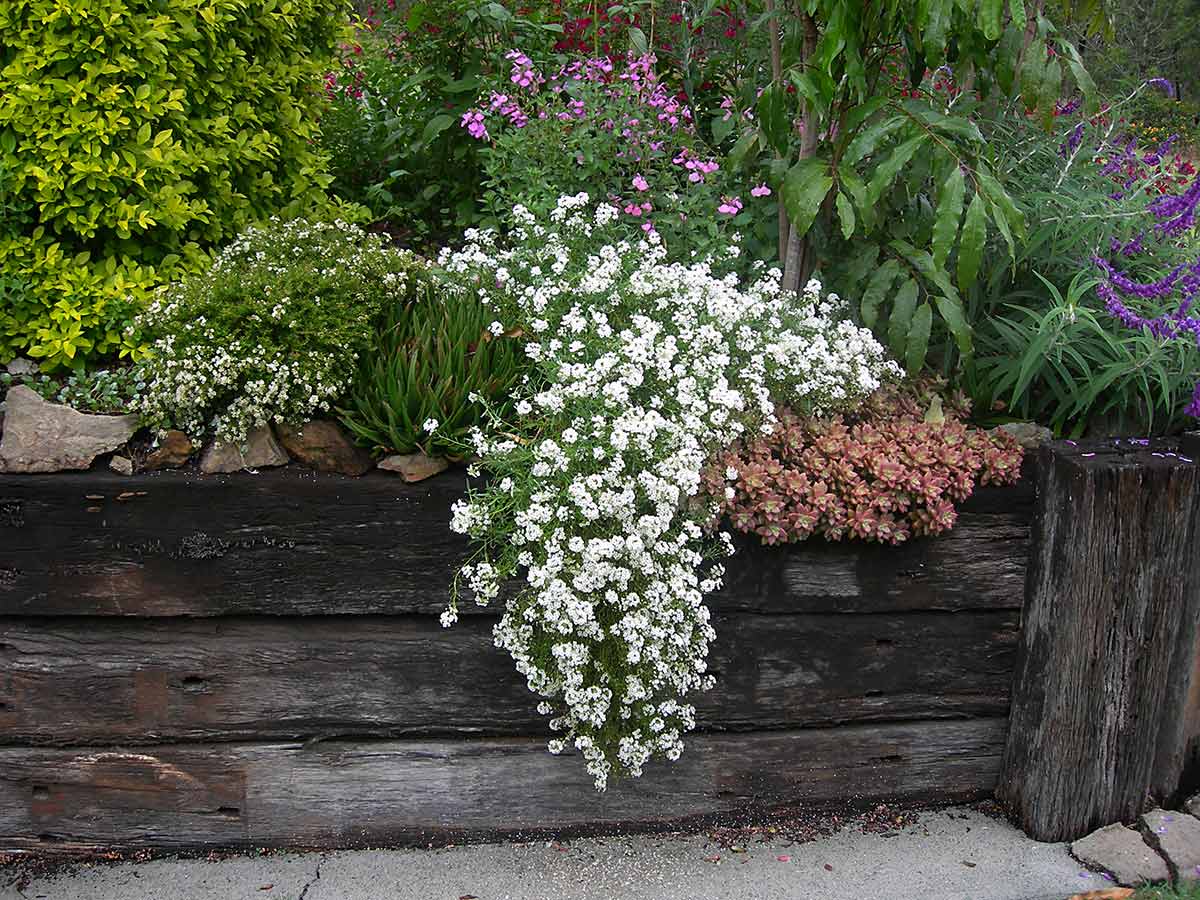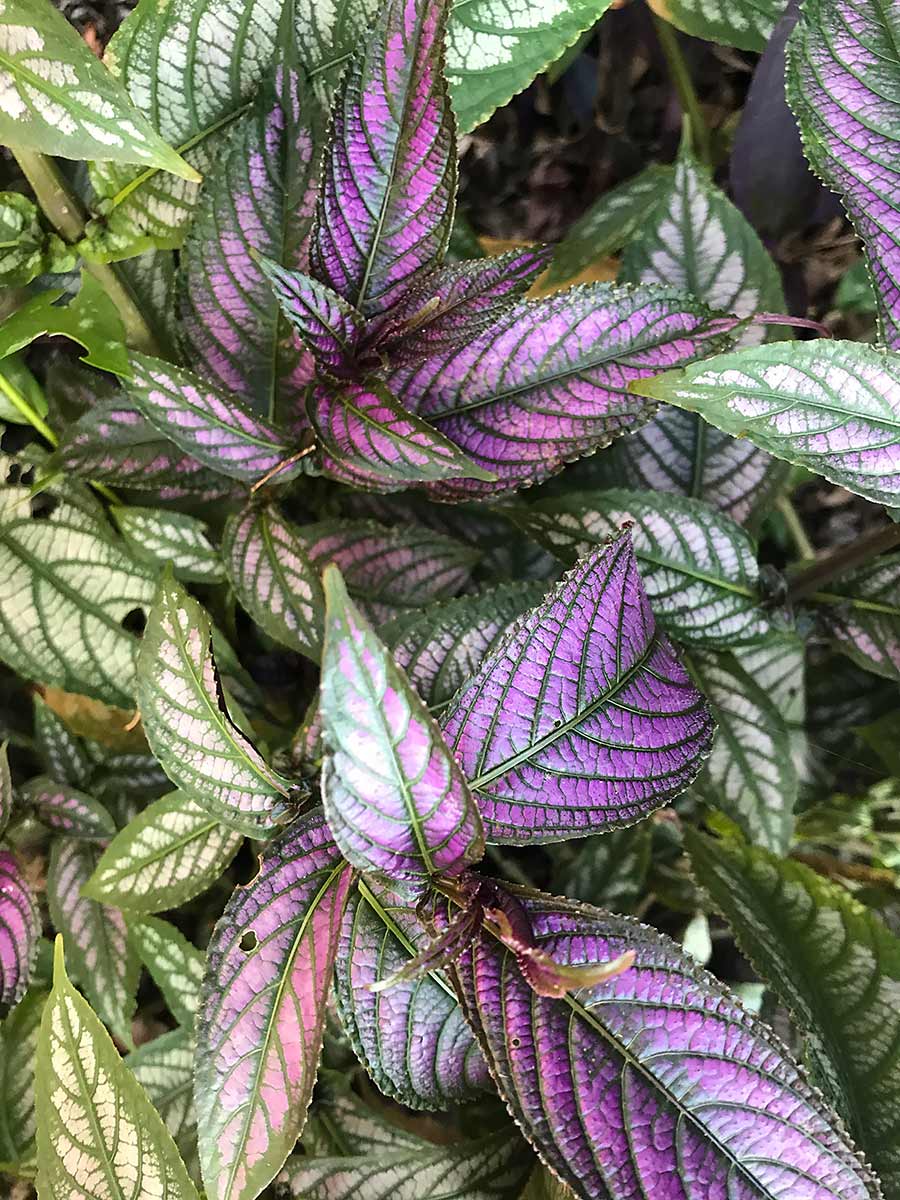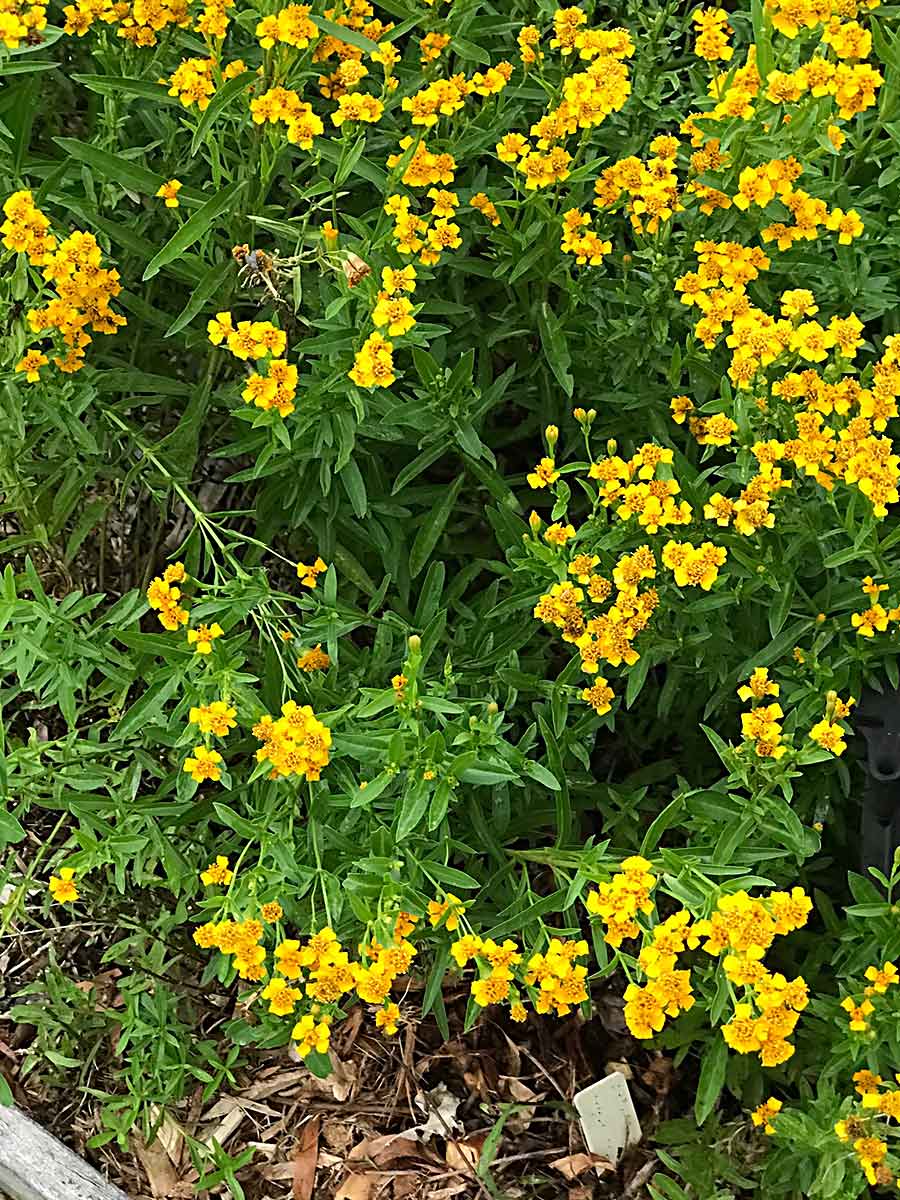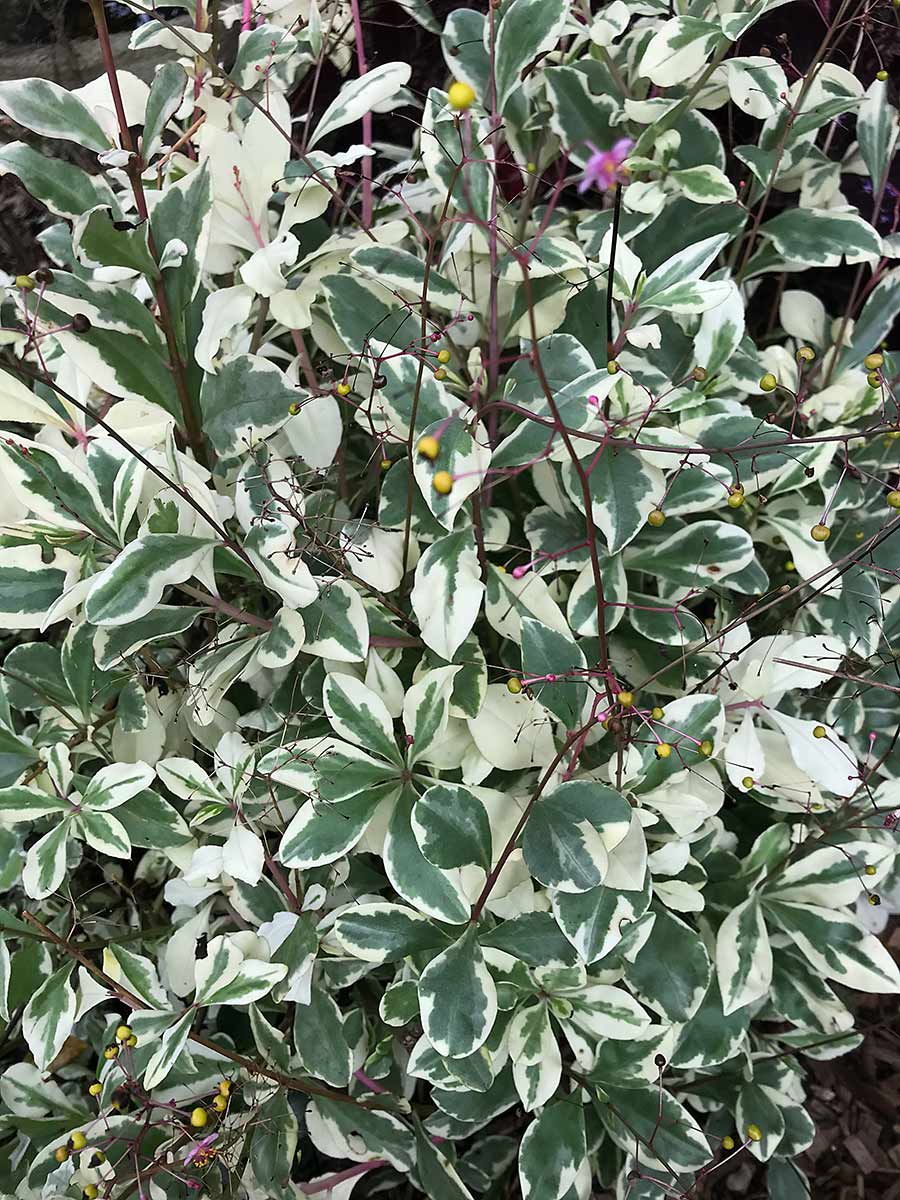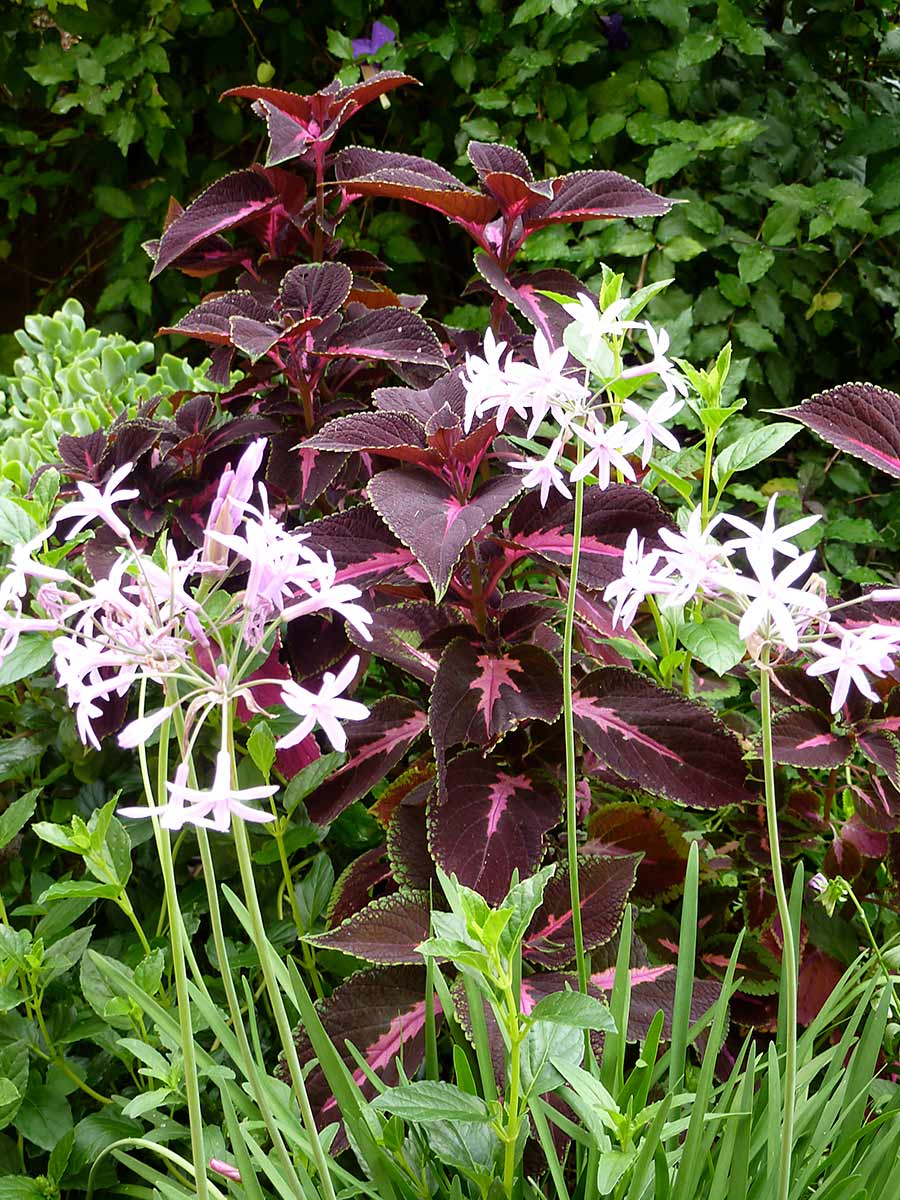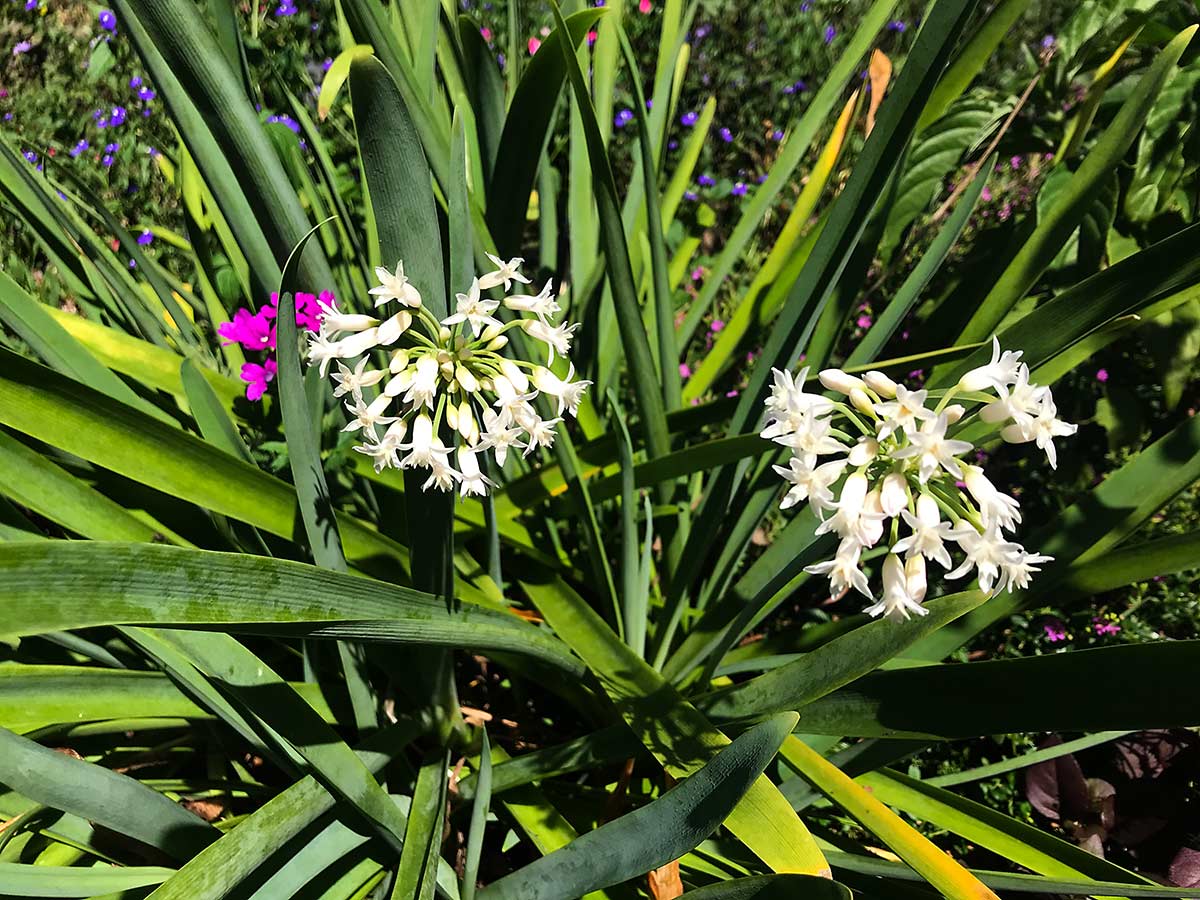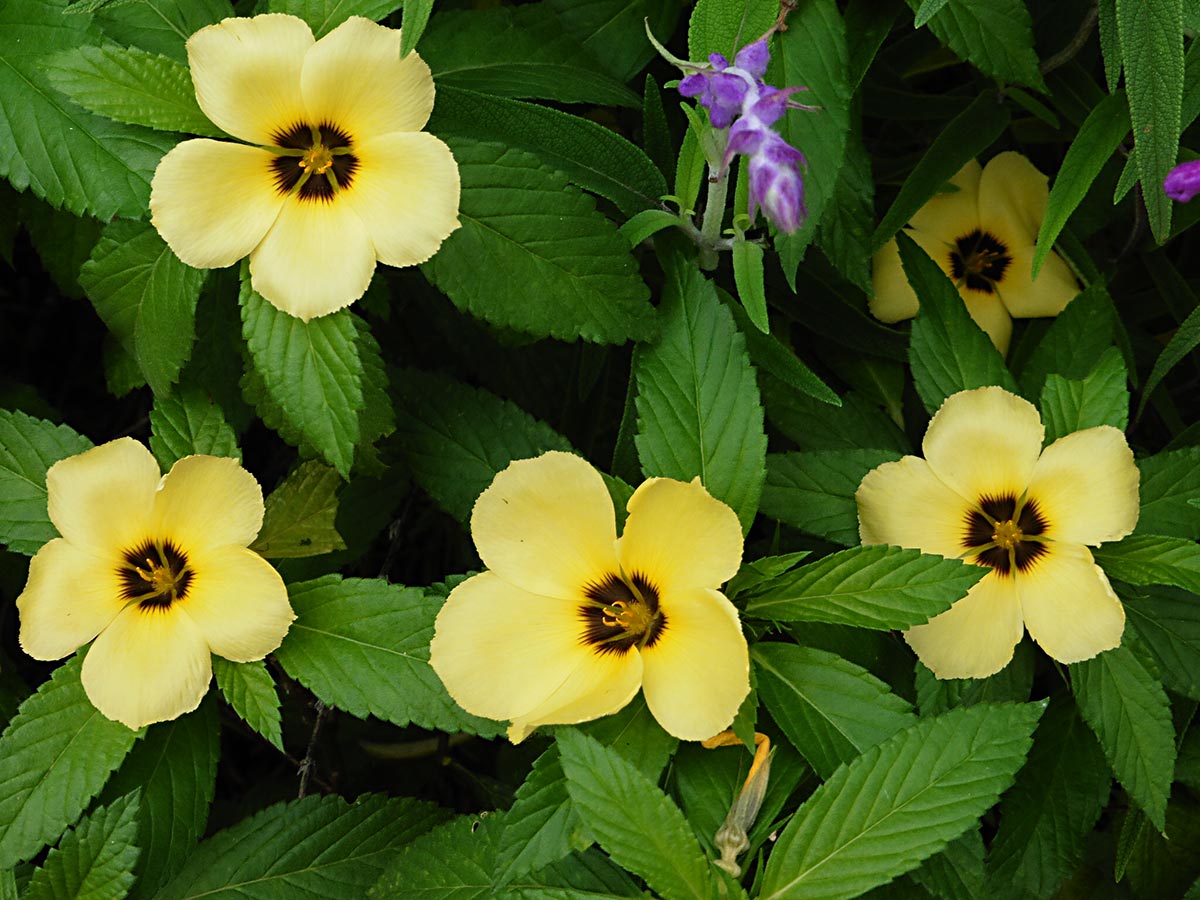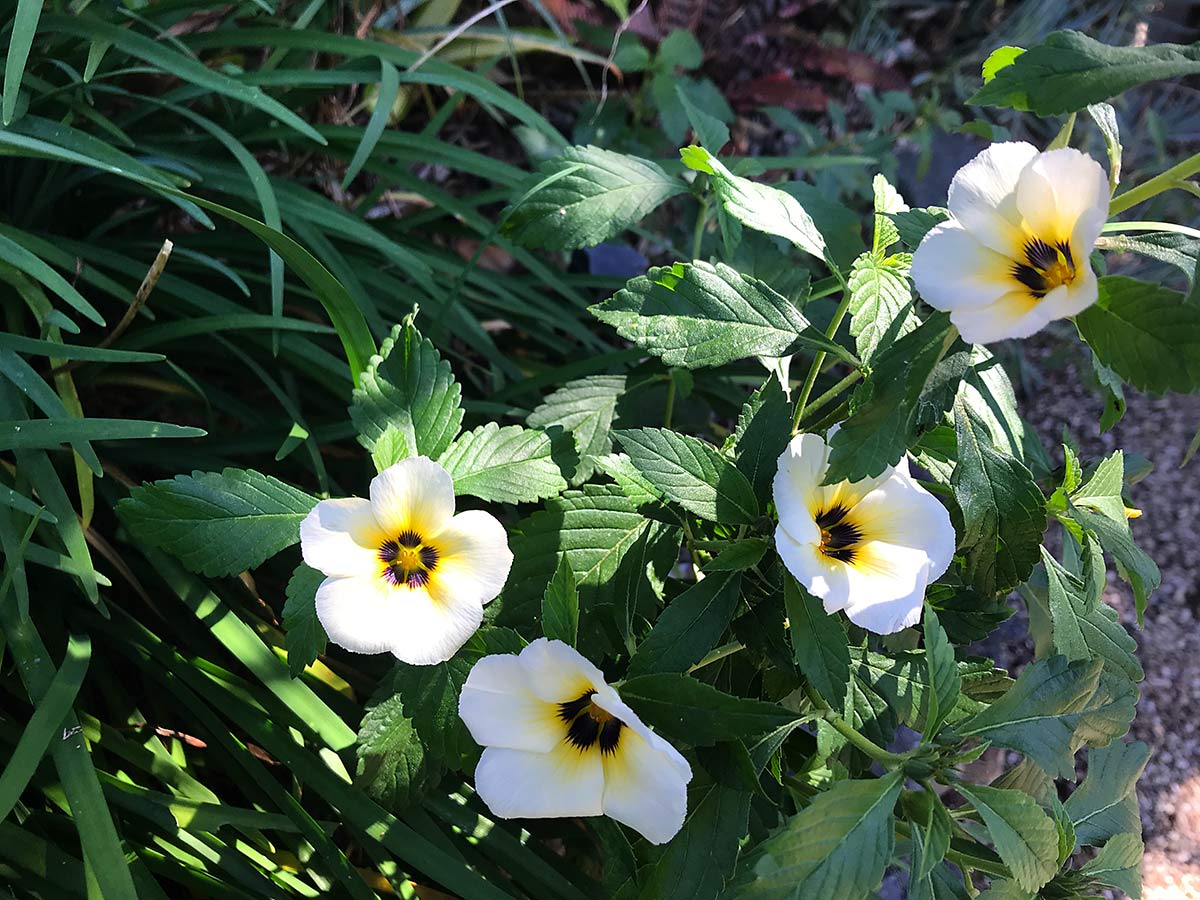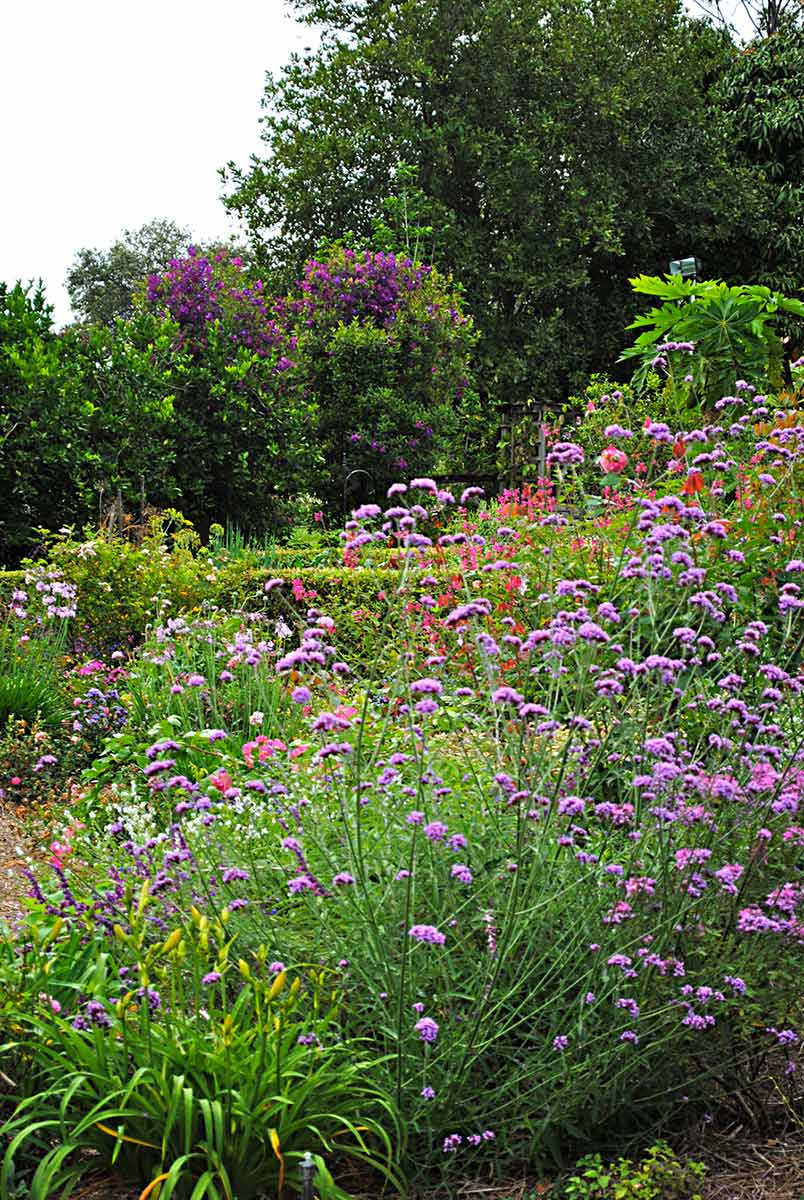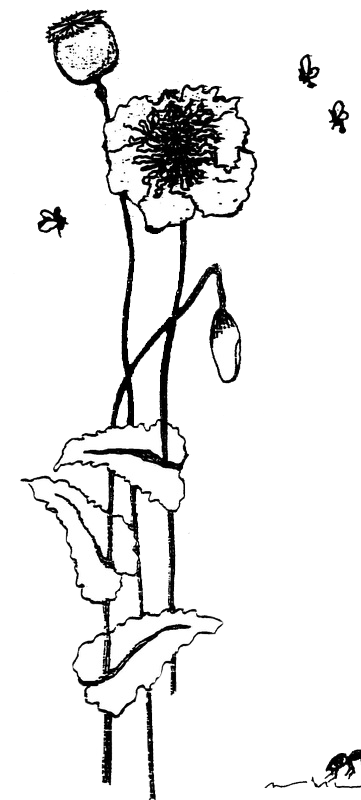
Cottage Perennials
for southeast
Queensland
‘promoting cottage gardening
in southeast Queensland’
Writeups on perennials
Artemisia pontica
Artemisia pontica has very feathery grey-green leaves which add nice texture to the garden. It has insignificant flowers but very fragrant foliage and is drought tolerant once established. Artemesia is very useful in flower arrangements.
Artemisia pontica has very feathery grey-green leaves which add nice texture to the garden. It has insignificant flowers but very fragrant foliage and is drought tolerant once established. Artemesia is very useful in flower arrangements.
Asystasia intrusa
Asystasia intrusa grows well in the subtropics. It can reach 1m in height but is best pruned regularly to keep it more compact, as it is a scrambling plant and becomes very leggy. The purple and white flowers are tubular and a most attractive addition to the cottage garden. There are other varieties in various colours.
Asystasia intrusa grows well in the subtropics. It can reach 1m in height but is best pruned regularly to keep it more compact, as it is a scrambling plant and becomes very leggy. The purple and white flowers are tubular and a most attractive addition to the cottage garden. There are other varieties in various colours.
Coreopsis grandiflora
Coreopsis grandiflora is a member of the Asteraceae (aster family) with brilliant yellow-gold daisy-like flowers. It forms a perennial clump, blooms from spring until autumn and is perfect for hot-coloured flower borders. Coreopsis is best in a sunny, well-drained position and tolerates drought well. It makes a good cut flower and occasional deadheading will prolong the flowering period. Regular division of clumps is recommended.
Coreopsis grandiflora is a member of the Asteraceae (aster family) with brilliant yellow-gold daisy-like flowers. It forms a perennial clump, blooms from spring until autumn and is perfect for hot-coloured flower borders. Coreopsis is best in a sunny, well-drained position and tolerates drought well. It makes a good cut flower and occasional deadheading will prolong the flowering period. Regular division of clumps is recommended.
Cranberry hibiscus
Cranberry hibiscus (Hibiscus acetosella) has edible leaves. It comes from the Malvaceae (malva family) and is thought to be native to tropical Africa. Growing well in southeast Queensland, it is best to prune it regularly to encourage new leaves that are tasty in salads. As it self-sows prolifically, it is best to replace with young plants from time to time. The deeply cut leaves are similar to Japanese maple and the cranberry red leaf colour and the rose-pink hibiscus type flowers are most ornamental. It prefers full sun but will grow in partial shade and thrives when it is warm and wet. The nutritious young leaves are known for their pleasantly tart flavour and can be eaten either raw or cooked. As the leaves contain oxalic acid, cranberry hibiscus should not be eaten in large amounts. The flowers can be used to make drinks where they contribute colour rather than flavour. This ornamental plant is excellent for the back of the border.
Cranberry hibiscus (Hibiscus acetosella) has edible leaves. It comes from the Malvaceae (malva family) and is thought to be native to tropical Africa. Growing well in southeast Queensland, it is best to prune it regularly to encourage new leaves that are tasty in salads. As it self-sows prolifically, it is best to replace with young plants from time to time. The deeply cut leaves are similar to Japanese maple and the cranberry red leaf colour and the rose-pink hibiscus type flowers are most ornamental. It prefers full sun but will grow in partial shade and thrives when it is warm and wet. The nutritious young leaves are known for their pleasantly tart flavour and can be eaten either raw or cooked. As the leaves contain oxalic acid, cranberry hibiscus should not be eaten in large amounts. The flowers can be used to make drinks where they contribute colour rather than flavour. This ornamental plant is excellent for the back of the border.
Sweet William
Sweet William (Dianthus barbatus) is excellent for mass plantings and as a border plant and is an excellent perennial in southeast Queensland. It will grow in full sun or partial shade.
Sweet William (Dianthus barbatus) is excellent for mass plantings and as a border plant and is an excellent perennial in southeast Queensland. It will grow in full sun or partial shade.
Eranthemum wattii
Eranthemum wattii is commonly known as blue sage and comes from India. It is a very colourful plant with compact habit, deep green foliage and clusters of blue-violet flowers in summer. The oval leaves have odd papery edges. It grows to about 40cm and is similar to Eranthemum pulchellum but with a deeper purple flower. Eranthemum pulchellum is more common and will grow to more than a metre but is best regularly pruned to keep it compact. Eranthemum wattii prefers semi-shade but will grow in full sun, however the colour seems more intense in the shaded areas where I grow it. It will self-sow but is not classed as invasive.
Eranthemum wattii is commonly known as blue sage and comes from India. It is a very colourful plant with compact habit, deep green foliage and clusters of blue-violet flowers in summer. The oval leaves have odd papery edges. It grows to about 40cm and is similar to Eranthemum pulchellum but with a deeper purple flower. Eranthemum pulchellum is more common and will grow to more than a metre but is best regularly pruned to keep it compact. Eranthemum wattii prefers semi-shade but will grow in full sun, however the colour seems more intense in the shaded areas where I grow it. It will self-sow but is not classed as invasive.
Erigeron karvinskianus ‘LA Pink Form’
Erigeron karvinskianus ‘LA Pink Form’. This variety of the seaside daisy has much larger and deeper pink flowers than the typical plant. It also has the advantage of rarely producing viable seed. It is tough, sun loving, drought tolerant plant and can be cut back hard every few months.
Erigeron karvinskianus ‘LA Pink Form’. This variety of the seaside daisy has much larger and deeper pink flowers than the typical plant. It also has the advantage of rarely producing viable seed. It is tough, sun loving, drought tolerant plant and can be cut back hard every few months.
Evolvulous pilosus ‘Blue My Mind’
Evolvulous pilosus ‘Blue My Mind’ is a fast-growing perennial with silvery-green foliage, prostrate habit and blue funnel shaped flowers. It is a tough plant, useful in borders, containers and as a groundcover.
Evolvulous pilosus ‘Blue My Mind’ is a fast-growing perennial with silvery-green foliage, prostrate habit and blue funnel shaped flowers. It is a tough plant, useful in borders, containers and as a groundcover.
Gaillardia grandiflora
Gaillardia grandiflora is an excellent border plant and does well in pots. It is drought tolerant and prefers well-drained soil with plenty of sun, though a little shade can be tolerated. Deadhead regularly to ensure further bursts of blooms.
Gaillardia grandiflora is an excellent border plant and does well in pots. It is drought tolerant and prefers well-drained soil with plenty of sun, though a little shade can be tolerated. Deadhead regularly to ensure further bursts of blooms.
Gloxinia perennis
Gloxinia perennis, sometimes known as Canterbury bells is a perennial plant, producing a clump of red-mottled stems up to 1m tall from an underground rhizome. The plant is commonly grown as an ornamental in tropical gardens, and as a pot plant in cooler zones, being valued especially for its pale purple flowers and attractive leaves. It is happy in semi-shade and flowers in autumn before going dormant through the winter months.
Gloxinia perennis, sometimes known as Canterbury bells is a perennial plant, producing a clump of red-mottled stems up to 1m tall from an underground rhizome. The plant is commonly grown as an ornamental in tropical gardens, and as a pot plant in cooler zones, being valued especially for its pale purple flowers and attractive leaves. It is happy in semi-shade and flowers in autumn before going dormant through the winter months.
Dianthera nodosa
This was previously known as Dianthera nodosa but is now classified as a justicia. The pretty pink, fan-like flowers cascade down along the arching branches. It blooms from late summer all through autumn. Like many of the Acanthaceae (acanthus family) it tolerates shade and will thrive in spots under trees even where there is some root competition. It is a useful underplanting for the other shade-loving shrubs and requires regular pruning. It will self sow.
This was previously known as Dianthera nodosa but is now classified as a justicia. The pretty pink, fan-like flowers cascade down along the arching branches. It blooms from late summer all through autumn. Like many of the Acanthaceae (acanthus family) it tolerates shade and will thrive in spots under trees even where there is some root competition. It is a useful underplanting for the other shade-loving shrubs and requires regular pruning. It will self sow.
Justicia carnea
The Brazilian plume flower or jacobinia (Justicia carnea) is a shade-loving, soft-wooded shrub. Thick plumes of white, pale pink or deep pink tubular flowers appear in regular flushes from early summer to late autumn. A form with dark purplish underleaf is known as ‘Radiant’. Justicia carnea needs hard pruning in late winter, and regular deadheading during summer will help to promote new blooms. It will also flourish in sunny spots but is useful for shaded sites, as are so many of the Acanthaceae (acanthus family) and is resilient to our increasingly hot summer weather. The white form looks pretty with silver-leaved companions, such as Plectranthus argentatus and Pilea cadierei.
The Brazilian plume flower or jacobinia (Justicia carnea) is a shade-loving, soft-wooded shrub. Thick plumes of white, pale pink or deep pink tubular flowers appear in regular flushes from early summer to late autumn. A form with dark purplish underleaf is known as ‘Radiant’. Justicia carnea needs hard pruning in late winter, and regular deadheading during summer will help to promote new blooms. It will also flourish in sunny spots but is useful for shaded sites, as are so many of the Acanthaceae (acanthus family) and is resilient to our increasingly hot summer weather. The white form looks pretty with silver-leaved companions, such as Plectranthus argentatus and Pilea cadierei.
Linaria vulgaris
Linaria vulgaris is a low growing plant with pale yellow flowers, resembling small snapdragons in dense spikes. It can be invasive in cool climates but not in the subtropics. It will die off during the summer but reappears in cooler weather.
Linaria vulgaris is a low growing plant with pale yellow flowers, resembling small snapdragons in dense spikes. It can be invasive in cool climates but not in the subtropics. It will die off during the summer but reappears in cooler weather.
Lobularia 'Snow Princess'® (sweet alyssum
Lobularia ‘Snow Princess’® (sweet alyssum) prefers evenly moist soil. It will be quick to show drought stress but should bounce back quickly once rehydrated. In a hanging basket, it is best to water often, more than once a day during warm weather. Plants are easier to keep moist when planted in large planters. Due to water needs ‘Snow Princess’ is ideal for use in larger planters. In containers, an application of continuous release fertiliser is suggested. This sterile Lobularia sp. is vigorous and has a long bloom time.
Lobularia ‘Snow Princess’® (sweet alyssum) prefers evenly moist soil. It will be quick to show drought stress but should bounce back quickly once rehydrated. In a hanging basket, it is best to water often, more than once a day during warm weather. Plants are easier to keep moist when planted in large planters. Due to water needs ‘Snow Princess’ is ideal for use in larger planters. In containers, an application of continuous release fertiliser is suggested. This sterile Lobularia sp. is vigorous and has a long bloom time.
Strobilanthes dyeriana
Strobilanthes dyeriana, the Persian shield or royal purple plant, is a species of flowering plant in the Acanthaceae (acanthus family) and is native to Myanmar.
It grows easily from cuttings and has iridescent green-veined purple leaves and small blue flowers. Strobilanthes grows to 75cm. It is happy in part to full shade and thrives in heat and humidity.
Strobilanthes dyeriana, the Persian shield or royal purple plant, is a species of flowering plant in the Acanthaceae (acanthus family) and is native to Myanmar.
It grows easily from cuttings and has iridescent green-veined purple leaves and small blue flowers. Strobilanthes grows to 75cm. It is happy in part to full shade and thrives in heat and humidity.
Tagetes lucida
Tagetes lucida or Mexican tarragon is a popular herb and can be a substitute for French tarragon which is difficult to grow in the subtropics. It has a sweet aniseed flavour and makes a delicious tea. The leaves can be added to salads, fruit salads and used in place of French tarragon for fish and chicken dishes.
Tagetes lucida or Mexican tarragon is a popular herb and can be a substitute for French tarragon which is difficult to grow in the subtropics. It has a sweet aniseed flavour and makes a delicious tea. The leaves can be added to salads, fruit salads and used in place of French tarragon for fish and chicken dishes.
Talinum paniculatum ‘Variegatum’
Talinum paniculatum ‘Variegatum’ is a tropical succulent and grows to about 60cm. The variegations are most attractive, and the tiny pink flowers turn into little yellow balls. It is a drought tolerant plant, requires very little care or pruning and is said to be edible, having been used in traditional medicine in Asia. This plant is in the same family (Talinaceae) as Surinam spinach (Talinum triangular), the leaves of which are very nutritious. However, it is said to self-sow readily, so care must be taken to avoid it becoming invasive.
Talinum paniculatum ‘Variegatum’ is a tropical succulent and grows to about 60cm. The variegations are most attractive, and the tiny pink flowers turn into little yellow balls. It is a drought tolerant plant, requires very little care or pruning and is said to be edible, having been used in traditional medicine in Asia. This plant is in the same family (Talinaceae) as Surinam spinach (Talinum triangular), the leaves of which are very nutritious. However, it is said to self-sow readily, so care must be taken to avoid it becoming invasive.
Tulbaghia cominsii x violacea ‘Fairy Star’
Tulbaghia cominsii x violacea ‘Fairy Star’ is low growing with narrow leaves and umbels packed with small starry lilac flowers produced from spring to autumn. Remove flower stems at the base as they finish, to keep the display going. The plant can be cut to the ground when it gets untidy and it will very soon be up and flowering again, much like all tulbaghia. The flowers are around half the size of Tulbaghia violacea.
Tulbaghia cominsii x violacea ‘Fairy Star’ is low growing with narrow leaves and umbels packed with small starry lilac flowers produced from spring to autumn. Remove flower stems at the base as they finish, to keep the display going. The plant can be cut to the ground when it gets untidy and it will very soon be up and flowering again, much like all tulbaghia. The flowers are around half the size of Tulbaghia violacea.
Tulbaghia simmleri (syn fragrans) ‘White’
Tulbaghia simmleri (syn fragrans) ‘White’ is unlike other commonly grown tulbaghia as it has a pleasant fragrance so is great to use as a cut flower. Its origin is South Africa and its foliage is grey/green and straplike, much like agapanthus. It is a most attractive plant that requires very little care as it doesn’t become untidy like Tulbaghia violacea, which can be cut back to the ground a couple of times a year. Like Tulbaghia violacea, its leaves and flowers are edible and can be used medicinally. It grows to about 30cm and is drought tolerant but copes well with a subtropical climate. This species is named after Paul Simmler, the chief gardener of the Boissier Collections in Geneva, who cultivated the specimens collected in the Transvaal. It was known as Tulbaghia fragrans for many years. There is a pink form.
Some interesting historical information on the genus Tulbaghia
The genus Tulbaghia was named by Linnaeus after Ryk or Rijk Tulbagh, Governor of the Cape Colony 1751-71. He was born in Holland in 1699, enlisted with the Dutch East India Company and sailed to South Africa in 1716. He died in Cape Town in 1771. Tulbagh corresponded with Linnaeus over a long period and sent him more than 200 plant specimens. This genus was first described from material sent by Tulbagh in 1769.
Tulbaghia simmleri (syn fragrans) ‘White’ is unlike other commonly grown tulbaghia as it has a pleasant fragrance so is great to use as a cut flower. Its origin is South Africa and its foliage is grey/green and straplike, much like agapanthus. It is a most attractive plant that requires very little care as it doesn’t become untidy like Tulbaghia violacea, which can be cut back to the ground a couple of times a year. Like Tulbaghia violacea, its leaves and flowers are edible and can be used medicinally. It grows to about 30cm and is drought tolerant but copes well with a subtropical climate. This species is named after Paul Simmler, the chief gardener of the Boissier Collections in Geneva, who cultivated the specimens collected in the Transvaal. It was known as Tulbaghia fragrans for many years. There is a pink form.
Some interesting historical information on the genus Tulbaghia
The genus Tulbaghia was named by Linnaeus after Ryk or Rijk Tulbagh, Governor of the Cape Colony 1751-71. He was born in Holland in 1699, enlisted with the Dutch East India Company and sailed to South Africa in 1716. He died in Cape Town in 1771. Tulbagh corresponded with Linnaeus over a long period and sent him more than 200 plant specimens. This genus was first described from material sent by Tulbagh in 1769.
Turnera elegans ‘Early Bird’
Turnera elegans ‘Early Bird’ is a low growing bushy plant with bright yellow flowers that close early in the afternoon. They are a highlight in the garden and easy to propagate.
Turnera elegans ‘Early Bird’ is a low growing bushy plant with bright yellow flowers that close early in the afternoon. They are a highlight in the garden and easy to propagate.
Turnera elegans ‘Just Dandy’
Turnera elegans ‘Just Dandy’ is a low growing ground cover plant with pale yellow flowers that close early in the afternoon. It will layer but is not invasive. It is a most attractive addition to the cottage garden.
Turnera elegans ‘Just Dandy’ is a low growing ground cover plant with pale yellow flowers that close early in the afternoon. It will layer but is not invasive. It is a most attractive addition to the cottage garden.
Verbena bonariensis
Verbena bonariensis is a long-lived herbaceous plant with upright stems usually growing 60-150 cm tall. Its small purple flowers are very densely clustered in short spikes and make a stunning display at the back of the perennial border. It self-sows readily.
Verbena bonariensis is a long-lived herbaceous plant with upright stems usually growing 60-150 cm tall. Its small purple flowers are very densely clustered in short spikes and make a stunning display at the back of the perennial border. It self-sows readily.
Knowledge shared is knowledge gained.
